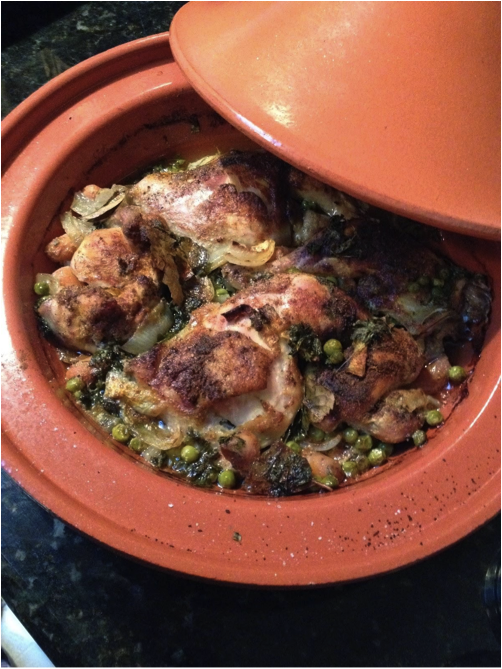Food, Love & Memories is a bimonthly column devoted to the evocative connections between the heart, food & soul. We invite you to share your story+recipe for future columns. More details here.
From gelato at Giolitti, kimchi at Sanchon, to kebop at Kara Mehmet Kebap Salonu, my vacation plans would inevitably start and end with at least half a dozen must-have comestibles. I am an amateur food aficionado; I write about food, take pictures of food, talk about food, and dream about food. Until recently, driving 80 miles from my apartment in Silicon Valley to Napa for an extra-large pistachio macaron at Bouchon seemed perfectly reasonable.
My tendency towards “foodieness” made sense, after all, I was raised by my parents to value food. In fact, my mother went to great lengths to teach me that wasting food, even a single grain of rice, was unacceptable. Both of my parents’ families had lost everything when the Burmese government seized the properties, investments, and businesses of “foreign” investors in the late 50’s and early 60’s. Their lives were turned upside down, and food, amongst other things, became a scarce resource. Their stories stuck with me and, as I got older, I made a conscious effort to avoid wasteful habits.
Over the last few years, this basic level of consciousness has evolved further. As I watched innocent civilians robbed of their families, homes, and food in places like Afghanistan, Iraq, Pakistan, Syria, Burma, Sudan, and, most recently Palestine, my high-brow foodie preferences increasingly seemed obnoxious.
Domestically, this feeling was reinforced as I began to hear about more and more Americans struggling to put food on the table for their families. A dinner for two at Alinea for novel, but meager amounts of overpriced molecular gastronomy seemed wasteful, especially when it meant that I could have a perfectly reasonable dinner elsewhere and donate the difference to fight hunger.
Initially, this new level of awareness was troublesome; basic meals at my local Middle Eastern dive started to incite feelings of guilt; I felt negatively about dinner pals who complained about their perfectly decent entrees or abandoned their leftovers; and I really started to despise picky judges on what used to be my favorite food competition shows.
Luckily, the evolution of this consciousness has become far more reasonable: I simply appreciate everything and anything I have…including the most basic of meals.
Last night, as my mind wandered to the plight of the Rohingyan Muslims while enjoying a bowl of khow suey, I realized that food will never be the same.
—————————————————–
Recipe: Drought-Compatible Chicken, Vegetable & Potato Tagine
This recipe is based on my recent discovery of a culinary homonym, the tagine. The tagine is both a Moroccan earthenware cooking dish and a savory dish cooked in the aforementioned dish. It is drought friendly as it requires very little water to cook a significant amount of food. I first discovered the tagine at a small Moroccan eatery in Paris, and I have been hooked ever since. Though the tagine is typically prepared as a stew, I cook out the water to create a delicious meat and rice dish.
Serving Size: 3-4
Ingredients:
- 1 chicken, cut into large pieces (soak in vinegar before preparing recipe)
- 1/2 pound of baby carrots
- 1/2 pack of frozen, organic peas
- 4-5 medium sized potatoes cut into medium chunks
- 2 onions, chopped (roughly)
- 2 tbsp of crushed garlic or garlic powder
- 1/4 cup of barley or farrow
- 1/2 lemon
- 1/4 cup of water
- 1/4 cup of olive oil
- Handful of chopped parsley
- Spice mix
- 1 tbsp of sea salt
- 1 tbsp of black pepper
- 1 tsp of paprika
- 1 tsp of cumin
- 1 tsp of cinnamon
- 1 tsp turmeric
Instructions:
- Spread a bit of olive oil around the bottom of the tagine (just a quick swirl)
- Line the bottom of the tagine with the barley, onions, potatoes, and carrots
- Pour in the water
- Layer chicken on top of your base
- Pour olive oil on top of the chicken
- Layer on spices, garlic, and lemon
- Bake at 350 degrees for 2.5-3 hours – check in on your tagine at the top of hour 2
- Remove the cover and let the water cook out
- Garnish with fresh parsley. Enjoy!
—
Interested in hearing more about the intersections of food, identity, survival, and land? Read Vice’s article, “Hummus is a metaphor for Israeli-Palestinian Tensions“, featuring Laila Al-Haddad, author of the cookbook, The Gaza Kitchen.
Tasneem Manjra is a tech marketer in the Silicon Valley. She takes several pictures of the same meal, which she sometimes uploads to her food blog, www.justaddghee.com.













